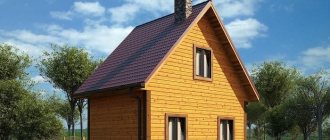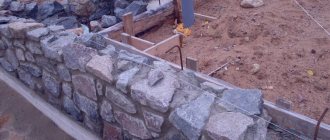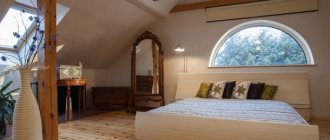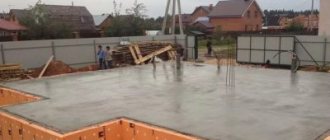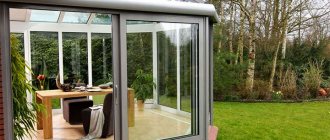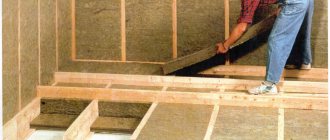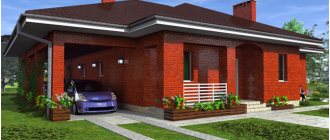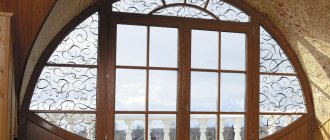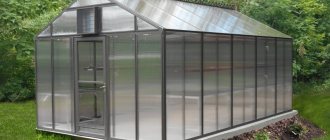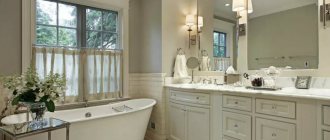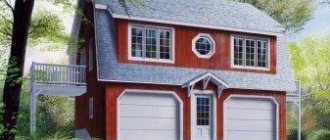With the onset of cold weather, our regular readers often discuss the choice of design and insulation materials for a dog house on the forum. The booth should be beautiful, in harmony with the landscape design of the site and the facade of the house.
Here’s what our regular reader Pavel writes: “Hello, dear ones! Share your experience and how you built the booth. It’s clear that you can take boards, knock them together, insulate them and let the dog live. But, from an aesthetic point of view, this structure may not be entirely in harmony with the owner’s home, possibly causing envy and irritation of the dog. By building with facing bricks, you can probably achieve harmony, but the issue of insulation and wall thickness gives you pause.”
Experienced builders share tips on what materials to choose for insulating a dog house. It will not only be warm, but also beautiful, and the four-legged pet will once again be convinced that its owners love it.
Why insulate the booth?
Some dog owners note that their dog is not afraid of cold weather. He can calmly lie in the snow in -30°C frost, chew a bone and be completely satisfied with his life. However, every dog should have its own cozy corner where it can relax. And it doesn’t matter whether the pet lives all year round in an apartment or on the street.
If a dog lives mainly outside the house, a warm undercoat gradually grows. The colder it gets, the warmer the dog's fur coat. If the dog lived in an apartment, but the owners decided to go to the country for the weekend, you should not leave him outside. The dog simply will not be able to adapt so quickly to being in the cold.
Large dogs retain body heat better, but they also need a comfortable kennel. If the dog is medium or small in size, the house should be very warm. Otherwise, the animal will catch a cold, you will have to go to the veterinarian and keep the dog at home.
Some owners cannot stay in the cottage all the time in winter. They leave the dog with a local watchman or ask neighbors to take care of their pet. In this case, the dog’s booth should be warm and cozy so that he does not feel homeless and lonely. He will know that the owners arranged this corner for him and left him to look after the house. Our regular reader Eduard.N faced this situation. He writes the following: “Tell me how to properly organize the wintering of a dog, the dog is aged (over 10 years old). We agreed with the watchman in the winter that he will come in to feed during the week.”
For an older dog, you need to select high-quality booth insulation. After all, the immunity of such animals is already weakened. If you plan to keep your dog outside in winter, the kennel must be insulated.
Do dogs get cold in winter?
A dog's sensitivity to temperature changes directly depends on its breed. For example, hunting or sledding (Husky, Malamute, Laika) dog breeds tolerate low temperatures well and can live outside and sleep in the snow.
But even in these cases there may be exceptions. Hunting dog breeds that live in a warm apartment from the moment of birth will not be able to stay in the cold for a long time without a warm kennel.
In addition to the breed, the survival rate of an animal in winter is also influenced by its size. It’s a little easier for big dogs; they lose their heat much longer than small dogs.
Warming the bottom of the booth
If a summer booth was built on the site, in the autumn you need to pay attention to its insulation. You need to start by arranging a warm bedding at the bottom, because this is where your four-legged pet lies in any weather. If possible, it is worth raising the house on supports to a height of at least 10 cm. This way, rain and snow will not get into the booth. The dog's house will immediately become warmer.
If there is enough space in the booth, the insulation is mounted on the bottom inside the booth. Otherwise, you will have to attach thermal insulation to the outside of the booth. Many owners build booths on a foundation. The issue of bottom insulation must be resolved in this case at the construction stage. Otherwise, it will be possible to make the flooring only inside the house.
The insulation should not release toxic substances or unpleasant odors into the environment. Otherwise, it will have a bad effect on the health of the animal. Dogs' sense of smell is known to be acute. They simply will not live in a house that has a strong chemical smell. The inside of the kennel can be insulated with the following materials:
- warm mat;
- hay;
- straw.
By lining the floor of the kennel with these materials, you can greatly increase the comfort of your dog’s stay in his kennel. If the climate is mild and there are practically no severe frosts, you can only insulate the floor. Moreover, some dogs rake out straw. Therefore, it is better to lay down a rug that can be easily cleaned from time to time.
Choice of insulation
Before you begin insulating the booth, you should decide on the choice of materials. Insulation is carried out not only from the inside of the booth, but also from the outside, so you need to choose materials based on their properties.
- The insulation should not contain toxic substances; failure to comply with this parameter can lead to problems with the health of the animal.
- Resistant to external factors such as moisture or heat.
It is important to choose a material that will not attract any rodents or insects. Materials with low thermal conductivity should be selected.
Felt
If winters in your region are frosty, you need to insulate not only the bottom, but also the walls and ceiling of the kennel. Felt is one good option. This is an inexpensive and natural material that is safe for dogs. It is hygroscopic and removes excess moisture well. Therefore, a healthy microclimate will be established in the booth.
The material needs to be cut into pieces of the appropriate size, and then simply nailed to the internal surfaces. The entrance curtain is made from the same material. It should open easily so the dog can get inside.
The advantage of felt is its wear resistance. The dog will not be able to quickly fray it, so the material will retain its properties throughout the cold season.
How to insulate
All responsible owners insulate the dog house, but it is impossible to say for sure whether the animal freezes in it in winter or not. To ensure that the living conditions of the furry guard are good, and that the dog does not freeze or suddenly get sick in winter, it is necessary to select good insulating materials for the booth. You can use different ones for this, but the following insulation materials are better suited for kennels:
- Polystyrene foam is good for insulating the roof and ceiling, but not inside the booth.
- Extruded polystyrene foam - suitable for thermal insulation of the base.
- Felt is a natural material, safe for dogs, suitable for internal insulation.
Attention!
When felt is used as insulation, it is recommended to use nails or other fasteners with wide heads. This will fix the material well and will not allow it to move away in a year or two.
Mineral wool cannot be used as insulation, as it is unsafe for the health of the animal. It releases formaldehyde and the dog can be injured by the fibers of the material. Polyurethane foam is not used, as it quickly becomes damp and collapses. Plywood cannot be fixed inside the kennel either - it emits toxic substances that are harmful to the health of the dog, so it is permissible to fix it only on the outside, on top of the vapor barrier layer.
Mineral wool
If the booth is large or the winters are cold, you need to consider other insulation options. A forum participant asks the following question: “Tell me, what is better to insulate the booth: with mineral wool or polystyrene foam? The size of the booth, based on the size of my Bonnie, turns out to be impressive (St. Bernard girl).”
An excellent option in this case would be mineral wool. This is an environmentally friendly, non-flammable material, characterized by a low ability to transmit heat. This is a hygroscopic material, so fungus and mold do not grow in it.
The only drawback of this material is its soft structure. It needs to be covered with a sheet of moisture-resistant plywood. You need to use basalt wool. Glass wool is not suitable for these purposes.
To avoid shrinkage of the material, it is better to buy solid varieties of stone wool. They are sold in slabs, not rolls. This insulation will last for many years. Moisture-resistant plywood will not allow liquid to reach the cotton wool. All joints must be treated with acrylic sealant.
Expanded polystyrene is not suitable for insulating a booth, just like polystyrene foam. This is a synthetic material that can release harmful chemical compounds during operation. Therefore, the dog will most likely refuse such housing.
Photos of beautiful
If the site is designed in accordance with the rules of landscape design, then a simple dog house made from boards may not fit into the overall look. By building a structure with your own hands, you can turn on the artist’s imagination and decorate a house for your four-legged friend. To do this, you can use both improvised materials and wood carvings.
Sources
- https://moypitomec.ru/sobaki/soderzhanie-i-uxod-sobaki/sobachja-budka-svoimi-rukami-chertezhi.html
- https://TeploRes.ru/montazh-i-remont/kak-obogret-sobachyu-budku.html
- https://eco-kotly.ru/uteplenie-budki-dla-sobaki-kak-mozno-uteplit-budku-dla-sobaki-na-zimu/
- https://sobakus.com/svoimi-rukami/budka.html
- https://stroitelstvo.expert/kak-uteplit-budku-dlya-sobaki-na-zimu/
- https://aploks.ru/byt-sobak/uhod-i-soderzhanie/kakimi-materialami-i-kak-uteplit-budku-dlya-sobaki-na-zimu.html
- https://ProUteplenie.com/otoplenie/kak-uteplit-budku-dlya-sobaki-na-zimu-poshagovaya-instruktsiya
- https://aniko-gas.ru/montazh/zimnyaya-budka-dlya-sobaki.html
- https://ogorod-bez-hlopot.ru/kak-uteplit-budku-dlya-sobaki.html
[collapse]
Rolled thermal insulation
There is a large selection of roll insulation materials on the building materials market. They have a porous structure and are made with a layer of foil. The thickness is from 3 mm. The thicker the insulation, the better. This option is suitable if the winter is mild and there are no severe frosts.
It is better to choose rolled material made from foam rubber. It has black color. Such insulation will retain heat inside the booth. Its thickness must be at least 8 mm. Thermal insulation based on polyethylene foam is quite fragile and is not capable of retaining heat in the kennel efficiently. This material is more suitable for exterior decoration.
Step-by-step instruction
The kennel has a removable roof so that it can be cleaned, changed bedding without problems, and the inside treated for fleas. Attention is paid to the insulation of the seats of the opening structure, since they are bridges for the passage of cold air.
Wall insulation
Upholstering a frame booth with stone wool slabs
The process of installing the insulator depends on the type of material used for this.
General procedure:
- the walls are cleared of debris, treated with antiseptics, and non-toxic preparations are used;
- fill the waterproofing membrane if required by the insulator used;
- the insulating layer is glued to special compounds or nailed with hardware or a stapler;
- an additional vapor barrier film is installed on top;
- The walls are finished using the chosen method, for example, with boards or fiberboard panels.
When installing films and insulating material, do not allow ventilated cracks or gaps, since drafts are more dangerous for an animal than cold. Do not use varnish or paint for internal surfaces; it is better to leave the surface in its natural state.
Insulating the floor from the cold
Cheap penofol material in several layers is suitable for the floor.
Sometimes owners use only the bedding at the bottom of the booth. This option is acceptable in warm climates where there are no severe frosts. Outside, under the bottom of the kennel, a layer of roofing material is nailed to protect the surface from soil moisture. To do this, the booth is turned over to conveniently nail down the material, and the boards are impregnated with an antiseptic.
Inside, the floor is lined with glassine, it is laid on the walls (10 cm), the joints are overlapped. You can use 2 layers of roofing felt, roofing felt, thick polyethylene. The insulation is secured with a stapler or small self-tapping screws; it can be glued to bitumen mastic.
Thermal insulation material is laid, it is nailed down with slats, on which a vapor barrier layer is laid. Finished floor boards or chipboard or OSB panels are nailed on top.
Under a warm dog house, dig a shallow pit (25 cm) to install a cushion of sand and crushed stone (10 and 15 cm, respectively). Roofing felt is laid over the bedding.
Protective curtain for entrance manhole
For winter, a protective curtain is needed.
The bulk of the heat flows through the hole. For curtains, thick fabrics are used, for example, tarpaulin, drape, wool, a flannelette blanket, you can put rubber, felt. Silicone curtains work effectively because they bend and do not deteriorate from frost, water and wind.
Sequence of work:
- Two rectangles are cut out of the material, their length and width are 5 cm larger than the hole, taking into account an overlap of 4 cm;
- the material is attached to the top of the hole, pressed with a wooden strip, the strips are placed overlapping one another so that there is no gap in the middle;
- On the sides, the curtain is also fixed with wooden slats all the way to the bottom, or elements are placed only on the upper half.
The bottom of the fabric is made heavier by sewing additional strips of material, metal plates, and rods. This is necessary so that the curtain halves do not develop from strong winds.
Heated booth
It has recently become popular among dog owners to install an electric heated floor system in their winter kennel. In this case, the dog will not freeze even in severe frost. He will spend a lot of time inside such a booth, so you don’t have to be afraid that in severe frost the dog will settle down for the night under the doors on a snow-covered threshold.
There are several options for creating such heating:
- cable;
- special ready-made rugs;
- infrared mats.
The most effective material will be the use of infrared mats. In addition to heated floors, you can buy a thermostat. This will save the amount of electricity spent on heating. The booth will also have a comfortable temperature.
The danger of using a heated floor in a kennel lies in the animal’s body’s reaction to heat. The fact is that due to such heating, the undercoat will become smaller. If a dog spends a lot of time in the cold and does not have the opportunity to warm up in a kennel, it may get sick.
Therefore, you need to set the heating temperature to the minimum value. The temperature in the booth will be above zero, but you should not allow the air to warm up to +18°C or higher. It is enough that the temperature in the booth is kept at +5...+10°C. The dog will not feel severe discomfort due to the sharp temperature difference inside and outside the kennel.
Installation location
Regardless of the breed, the pet needs to choose a place on the estate, from where the house, gates, and most of the yard will be visible. The guard needs to see the protected area.
The dog's house should not be located in the wind, in the open sun, the entrance should not be flooded with rain or covered with snow. Buildings for animals or birds should not be placed nearby - dogs are sensitive to odors.
The pet should like the chosen place. If he likes to lie down, climbing higher, they arrange a dwelling with a flat roof and place it on a hill.
Why you can't keep a dog in a barn
Often, having outbuildings on the property, the owner of the dog prefers not to build a separate house for it, but keeps it in a barn.
This is strictly contraindicated:
- the darkness of the barn constantly keeps the dog in an alert state and is very poorly tolerated by the animal
- a constant reaction to sounds made by insects or rodents causes irritation, nervousness, and anxiety in animals
- the heat generated by the dog’s body will completely heat a small structure, but not a barn
- from the barn it is impossible to observe what is happening outside, this causes depression in the dog, lethargy, and heart disease
- lighting a barn with electricity does not replace daylight and has a bad effect on vision
- It is absolutely unacceptable to keep dogs together with farm animals and poultry.
Cable floor heating in the booth
It is best to choose a self-regulating wire for these purposes. In this case, you do not need to buy a thermostat. The colder it is outside, the more the wire will heat up. The same heating system is laid in gutters and on sidewalks to thaw the surface.
The booth requires very little wire. Self-regulating wire is sold in small pieces. Resistive wires are intended for indoor installation. Therefore, in the booth they quickly fail.
Having purchased the wire, you need to connect the electrician to the booth. All wires for connecting the electric heater are laid in metal sleeves so that the dog cannot bite through them. A layer of insulation, for example, mineral wool, is placed on the bottom. Plywood is mounted on it, in which slots are made for the wire. It is laid in a snake pattern with a pitch between turns of 12-15 cm. Metal plates are placed under the wire for proper heat distribution. A waterproof sheet of plywood is laid on top. The thickness of the material should not exceed 1 cm.
Using a plug, the heated floor is connected to the network. Now the pet will be comfortable in its kennel even in severe frost.
Which bedding is better
In the previous paragraph we looked at the three most common types of dog beds, but you need to remember that there are as many opinions as there are people. In particular, there are dog owners who prefer to use polystyrene foam, padding polyester and other artificial materials. Regarding foam plastic, for example, you can lay it on the bottom of the booth and cover it with plywood on top.
When choosing bedding material, you need to look at the dog’s reaction to all of the above types of litter, since the dog may reject any of them, but will feel comfortable with another type of bedding. Having settled on some material, do not forget to update it from time to time, which will protect your pet from diseases, fleas and other negative factors.
Ready heated mat
There are special warm mats on sale that already have a heating wire sealed into them. The bottom of this product is made of rubber. On top there is a low-pile carpet. It also has a layer of rubber underneath. The dog will not damage the wire with its claws. The mat is simply laid out in the booth and connected to the network using a plug.
If necessary, you can periodically remove the mat and clean it from dirt. In such conditions, the heating device will work for 3-5 years. The dog will not only be warm, but also soft, because the carpet is quite pleasant to the touch.
Can heaters be used?
Many breeders, faced with the need to insulate a dog’s home, are interested in the issue of heating the kennel. Heating can be provided if desired; moreover, you can even lay a heated mat on the floor. Of course, a heated mat or heated booth will be the best option, as no insulation can compare with this. Moreover, heating the home will help ensure dryness inside.
Today you can find several types of heaters on sale:
I recommend: How to treat bronchitis in dogs
Infrared heated floor
The best option for heating a dog house would be an infrared heated floor. This is a film with a special conductive carbon paste sealed inside it. It ensures uniform heating of the surface. The film thickness is less than a millimeter. The places where the film is connected to the wires are about 8-10 mm thick.
The advantage of the film also lies in its special heating. It emits waves of the infrared spectrum. They heat objects, but not the air. Therefore, the pet’s paws will be warm, but it won’t be too hot inside the booth, because this is important for the dog’s health.
The insulation is laid down, and a sheet of moisture-resistant plywood is placed on it. A film is rolled out on top of it. In certain places it can be cut with scissors to fit the kennel floor. Metal clips are connected to the contacts. Wires are supplied to them (everything is supplied complete with heated floors). The contacts are insulated with bitumen tape and covered with protective plastic caps. These places need to be deepened into the plywood, so it must be thick enough. The wires lead to the thermostat. It is better to choose a model with a built-in air temperature sensor. A sheet of plywood is laid on top.
If you need to build a kennel from scratch, read about how to build a winter version of a dog house with your own hands.
Subscribe to our Telegram channelExclusive posts every week
Drawing and diagram
Before you build a kennel, you need to submit a drawing of it! It is not necessary to draw up a special drawing for the booth, since the design is not complicated. You can simply draw a diagram on a simple sheet of paper and determine the dimensions of the structure on it.
If you want to build a booth with exact dimensions, then a drawing is necessary. To complete the drawing correctly, you need to consider the following nuances:
- the interior space should be spacious enough for the dog to turn around freely. If a kennel is made for a puppy, then you need to understand that he will grow up very soon, so it is better to build a large kennel right away;
- if you plan to build a warm kennel, then it is better to use wood as a material - it is practical, environmentally friendly and is an excellent heat insulator;
- if there are frosty winters in your region of residence, then it is better to prefer a kennel built as a sandwich panel with insulation between the walls;
- if a booth is being built for a large dog, then it is installed inside a special enclosure for a four-legged pet;
- It is also advisable to decide on the shape of the roof when drawing up the drawing. For a large dog, it is better to build a kennel with a pitched roof. Dogs love to lie on it in the summer. A gable roof is suitable for a small booth when you need to increase the usable area of the internal space.
Developing a drawing will help to provide for all the nuances of construction and the kennel for your four-legged friend will turn out to be of high quality and comfortable.
